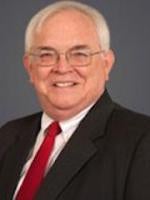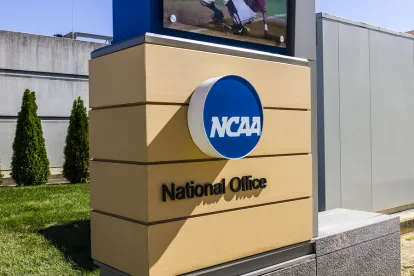The National Collegiate Athletic Association (NCAA) and 11 of its member conferences are on trial in In Re: National Collegiate Athletic Association Grant-in-Aid Cap Antitrust Litigation (4:14-md-2541) to defend against antitrust challenges to current rules limiting the amount members may pay to student-athletes for the cost of attendance. The student-athletes claim that the NCAA’s practice of capping the monetary value of athletic scholarships prevents conferences and individual colleges from competing with one another. As a result, they argue, student-athletes are denied the payment they would receive if institutions were allowed to compete for their services. In previous antitrust litigation, O’Bannon, et al. v. National Collegiate Athletic Association, et al., a panel of the U.S. Court of Appeals for the Ninth Circuit held that previous NCAA amateurism rules violated federal antitrust laws under the “rule of reason” analysis.
Background
Revised NCAA rules expanded allowable scholarships to include the full cost of attendance. These rules have been challenged by male Football Bowl Subdivision (FBS) football players and male and female Division I basketball players in several cases consolidated before U.S. District Judge Claudia Wilken of the Northern District of California. The student–athlete plaintiffs allege that the NCAA and 11 of its member conferences fixed prices for the payments and benefits that the students received in return for their elite athletic services.
In March 2018, Judge Wilken applied the antitrust rule-of-reason analysis to decide cross-motions for summary judgment. Judge Wilken adopted the market definition from the prior O’Bannon case—i.e., the market for a college education combined with athletics, or, alternatively, the market for the student-athletes’ athletic services. She found no dispute that the challenged practices produced significant anticompetitive effects within the relevant market because “greater compensation and benefits would be offered in the recruitment of student-athletes absent the challenged rules.” However, Judge Wilken denied cross motions for summary judgment on the question of “whether the challenged NCAA rules serve[d] Defendants’ asserted procompetitive purposes of integrating academics with athletics and preserving the popularity of the NCAA’s product by promoting its current understanding of amateurism.”
The final step of the rule-of-reason analysis involves determining whether the plaintiffs can “make a strong evidentiary showing” that the defendants’ legitimate objectives can be achieved in a substantially less restrictive manner by allowing autonomous conferences to set rules regulating education and athletic participation expenses, or by the court’s issuing a nationwide injunction enjoining any national rules limiting payments or non-cash benefits that are “tethered to educational expenses” or “incidental to athletic participation.”
Judge Wilken denied the defendants’ motion for summary judgment on these issues and ordered a bench trial to take place.
The Ninth Circuit and the Rule of Reason
The Ninth Circuit previously ruled that the antitrust rule of reason required the NCAA to allow its members to offer full “cost of attendance” scholarships, but not payments for “name, image, or likeness.” However, the Ninth Circuit panel considering the NCAA’s appeal in 2015 rejected one dramatic change that Judge Wilken had ordered. In O’Bannon, Judge Wilken had ordered that the NCAA could no longer enforce its rules limiting payments to athletes and directed the NCAA to allow its members to pay male Division I football and basketball players up to $5,000 per year “for the licensing or use of . . . [their] names, images, and likenesses” (NIL) in addition to the federally defined “cost of attendance” for scholarships after August 1, 2015. The NCAA had announced in August of 2014 that it would allow members to pay male Division I football and basketball players the full “cost of attendance.”
The Ninth Circuit panel, applying a rule-of-reason analysis to the NCAA’s limits on payments to athletes, upheld the finding that past NCAA restrictions violated the Sherman Act. The panel also approved the remedy of ordering the NCAA to permit “full cost of attendance” scholarships. However, a split panel rejected Judge Wilken’s order requiring the NCAA to allow up to $5,000 per year for NIL.
After rejecting many of the NCAA’s arguments, the panel focused on the third step of the rule-of-reason analysis—whether substantially less restrictive alternatives to the challenged rules existed that were “virtually as effective” as the challenged rules “without significantly increased cost.” Judge Wilken had found full cost-of-attendance scholarships and NIL payments to be such alternatives. The Ninth Circuit panel affirmed Judge Wilken’s decision that full cost-of-attendance scholarships were an appropriate alternative, but the majority found that her direction concerning NIL payments was clear error: “in finding that paying students cash compensation would promote amateurism as effectively as not paying them,” the majority wrote, “the district court ignored that not paying student-athletes is precisely what makes them amateurs” [majority opinion’s italics, footnote omitted]. Chief Judge Sidney Thomas, however, would have upheld the NIL payments.
In Re: National Collegiate Athletic Association Grant-in-Aid Cap Antitrust Litigation will test the NCAA’s ability to hold the line. Testimony by economic experts and university and conference officials in the 10-day bench trial has concluded.




 />i
/>i

